
World War II: Adolf Hitler Military Directives and Naval Conferences
$19.50
World War II: Adolf Hitler Military Directives and Naval Conferences
Description
World War II: Key Events and Figures
Timeline of Main Events (Based on Source)
- Pre-1939: The German Navy anticipates it will not be fully prepared for a wide war until 1944 or 1945.
- 1939 (Likely Prior to September): The German Navy prepares “Battle Instructions for the Navy” as a general basis for operational and organizational groundwork in the event of war. This document specifies expected tasks during the opening phase of a war and provides guidance for naval warfare.
- September 1939: Germany invades Poland, initiating World War II. The German Navy initially places restrictions on submarine warfare, particularly against French ships, despite some German naval officers believing unrestricted submarine warfare is Germany’s best chance for victory. The Navy hopes Britain and France might withdraw from the war after Poland’s defeat.
- 1939 – 1945: Adolf Hitler and the Commander in Chief of the German Navy hold numerous conferences on matters concerning the German Navy. Records of these conferences were taken as notes for the Commander in Chief and later typed and signed. These conferences discuss naval problems faced by Germany during the war.
- December 20, 1940: Adolf Hitler signs Top Secret Directive 21, “Operation Barbarossa.” This directive outlines the plan for the German invasion of the Soviet Union.
- June 22, 1941: “Operation Barbarossa,” the German invasion of the Soviet Union, commences. The directive states the goal is to crush Soviet Russia in a rapid campaign before the end of the war with Britain. The directive also outlines general plans for the army, air force, and navy in this operation and considers potential supporting nations.
- 1939 – 1945: Adolf Hitler increasingly takes direct command over military activities as the war progresses. Military directives from later years reflect a shift from large-scale planned offensives to piecemeal defensive operations.
- During the War (Specific Dates Not Provided): Various military directives are issued by Adolf Hitler and the German Armed Forces High Command (OKW), covering a wide range of operations and strategic considerations. Examples of these directives (mentioned by title) include:
- Operation “Weiss” (likely the invasion of Poland)
- Operation “Gelb” (likely the invasion of France and the Low Countries)
- Air Attacks Without Warning
- Operation “Seeloewe” (planned invasion of Britain)
- Operation “Felix” (planned seizure of Gibraltar)
- Cooperation with Japan
- Future of Leningrad (siege and potential capture)
- Deception of the Enemy Operations
- Operations in the Black Sea
- Operations against Unoccupied France and the Iberian Peninsula
- Strengthening of Defense Measures in the West
- Operations in the Crimea
- Reinforcement of the African Panzer Army
- Hitler Assumes Command of Army (reflecting increasing direct control)
- Operation “Atilla” (potential occupation of Vichy France)
- Operations in Italy
- Operations in Southern Russia
- Warfare against England (likely referring to the Battle of Britain and subsequent strategies)
- Battle for Rome
- Order to Destroy U.S. 5th Army
- Operations by Naval Forces in Case of an Enemy Landing
- Bombardment of England
- Preparations for the Defense of the Reich (as the war turned against Germany)
- Participation of Civilian Authorities in Repelling Enemy Attacks
- Preparations for Gas Warfare
- V-1 and V-2 Operations (deployment of these weapons)
- Evacuation of Personnel West of the Rhine (as Allied forces advanced)
- Measures for Destruction Within the Reich (scorched earth policy)
- Doenitz Appointed Successor of Hitler
- Hamburg Not to be Defended
- Unconditional Surrender
- Capitulation to Eisenhower
- Terms of Capitulation
- End of the War (Specific Date Not Provided):Karl Dönitz is appointed as Adolf Hitler’s successor.
- Orders are given that Hamburg is not to be defended.
- Germany issues an unconditional surrender.
- The German military capitulates to General Dwight D. Eisenhower.
- Terms of the capitulation are discussed and agreed upon.
Cast of Characters (Principle People Mentioned)
- Adolf Hitler: The Führer and Chancellor of Germany during World War II. He increasingly took direct command of the German armed forces as the war progressed and issued numerous top-level military directives covering all aspects of the war. He also held regular conferences with the Commander in Chief of the German Navy. His key directives included Operation Barbarossa (invasion of the Soviet Union) and numerous others related to specific military operations and strategic goals. He ultimately appointed Karl Dönitz as his successor.
- Commander in Chief of the German Navy: This individual (not named specifically in the provided excerpt) held the highest command position in the German Navy during World War II. He regularly conferred with Adolf Hitler on naval matters, and notes were taken of these conferences. These records provide insight into the strategic challenges and limitations faced by the German Navy.
- Karl Dönitz: A high-ranking German naval officer who eventually became the Commander in Chief of the Navy. Towards the end of the war, he was appointed as Adolf Hitler’s successor as head of state. He was involved in the later stages of the war, including the period of Germany’s unconditional surrender.
- Dwight D. Eisenhower: The Supreme Allied Commander in Europe during World War II. The source mentions that the German military ultimately capitulated to him, signifying the formal end of the war in the European theater for Germany.
World War II: Adolf Hitler Military Directives and Naval Conferences
1,541 pages of U.S. Army Intelligence translations of top-level directives issued by Adolf Hitler and by the German Armed Forces High Command (0KW) from 1939 through 1945, conferences between Hitler and the Commander in Chief of the German Navy, and Battle Instructions for the German Navy.
As the war progressed Hitler took more and more direct command over activities in the field. The directives of the later years of the war clearly reflect the change in the character of German warfare from large scale planned offensives to piece meal defensive operations.
Adolf Hitler and other Top-Level Directives of the German Armed Forces
U.S. Army Intelligence translations of top-level directives issued by Adolf Hitler and by the German Armed Forces High Command.
An example of key a directive is the December 20, 1940 Top Secret Directive 21 titled “Operation Barbarossa,” signed by Adolph Hitler. Operation Barbarossa was the code name for the German invasion of the Soviet Union, which started on Sunday, 22 June 1941. The first sentence in the directive reads, “The German Armed Forces must be ready to crush Soviet Russia in a rapid campaign, even before the termination of the war with Britain (operation ‘Barbarossa’).” The directive goes on to give general plans for the German army, air force and navy, and speculation about which nations would support Germany and what their roles would be in the invasion.
Some of the directive titles include:
Operation “Weiss”
Operation “Gelb”
Air Attacks Without Warning
Operation “Seeloewe”
Operation “Felix”
Cooperation with Japan
Operation “Barbarossa”
Future of Leningrad
Deception of the Enemy Operations
Operation “Barbarossa”
Operations in the Black Sea
Operations against Unoccupied France and the Iberian Peninsula
Strengthening of Defense Measures in the West
Operations in the Crimea
Reinforcement of the African Panzer Army
Hitler Assumes Command of Army
Operation “Atilla”
Operations in Italy
Operations in Southern Russia
Warfare against England
Battle for Rome
Order to Destroy U.S. 5th Army
Operations by Naval Forces in Case of an Enemy Landing
Bombardment of England
Preparations for the Defense of the Reich
Participation of Civilian Authorities in Repelling Enemy Attacks
Preparations for Gas Warfare
V-1 and V-2 Operations
Evacuation of Personnel West of the Rhine
Measures for Destruction Within the Reich
Doenitz Appointed Successor of Hitler
Hamburg Not to be Defended
Unconditional Surrender
Capitulation to Eisenhower
Terms or Capitulation
Hitler Conferences on Matters Dealing with the German Navy
Office of Naval Intelligence translations of documents concerning important conferences between Hitler and the Commander in Chief, Navy occurring from 1939 to 1945, for which records were recovered. For the most part the documents translated were notes taken for the Commander in Chief, Navy during his conferences with Hitler. After these notes were subsequently typed, they were signed by the Commander in Chief, Navy.
These translations provide material for the study of naval problems experienced by the German navy. The material shows that the German Navy did not think it would be prepared for a wide war until 1944 or 45. The notes clearly shows Germany’s vain hope that Britain and France might drop out of the war after the defeat of Poland.
For this reason, at the outset, restrictions were placed on submarine warfare, particularly with reference to French ships, in spite of the fact that German naval men believed that unrestricted submarine warfare was Germany’s only chance of bringing the war to a successful conclusion.
Battle Instructions for the German Navy
Office of Naval Intelligence translations of a 1939 German Navy document titled, “Battle Instructions for the Navy.” The purpose of this staff study according to the report was to, “serve as a general basis and to provide for uniform guidance of the operational and organizational ground-work of the Commanding officers, in preparation for the event of war. These instructions specify the tasks which may be probably expected during the opening phase of a war, and give directions for the employment of the means for waging war, and for the conduct of naval warfare in the various sea and ocean areas within the limits of present potentialities. With the commencement of hostilities, they go into effect in every case without special orders being issued.”









Related products
-
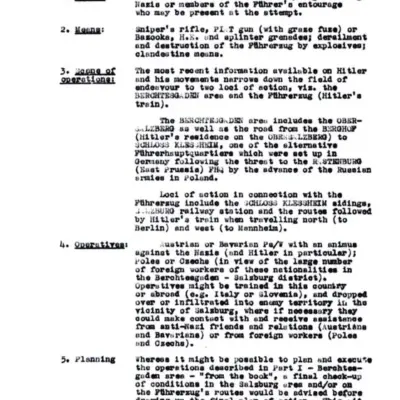
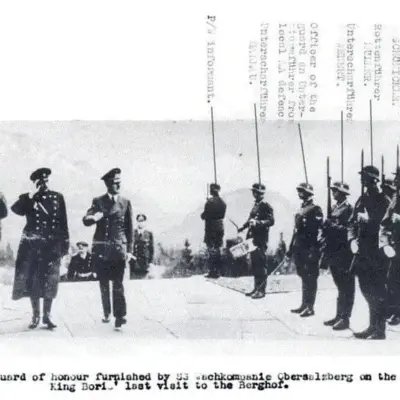
World War II: Adolf Hitler and Operation Foxley – British Assassination Plot
$19.50 Add to Cart -
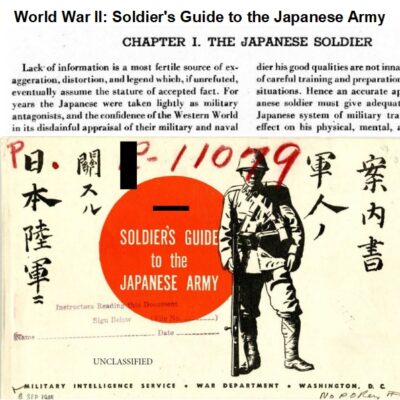

World War II: A Soldier’s Handbook on the Japanese Army
$3.94 Add to Cart -
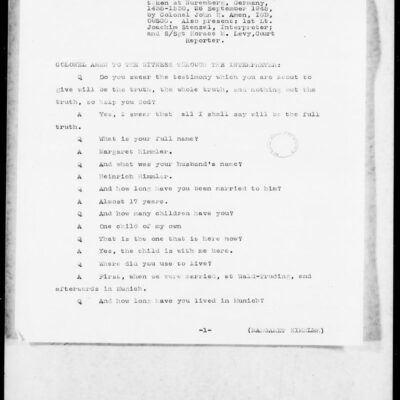
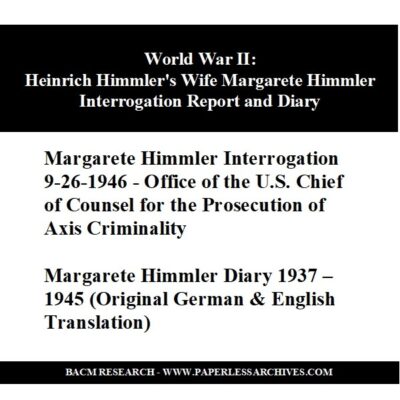
World War II: Interrogation Report and Diary of Margarete Himmler, Wife of Heinrich Himmler
$3.94 Add to Cart -
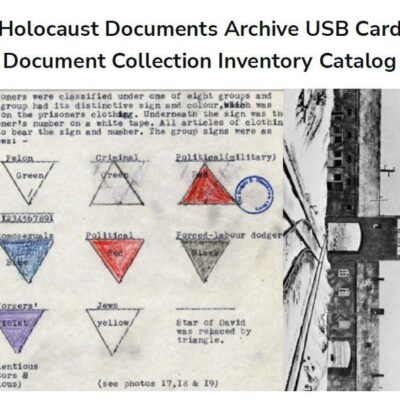
Holocaust Document Archive PDF file – Inventory Catalog of Document Collection
$3.94 Add to Cart